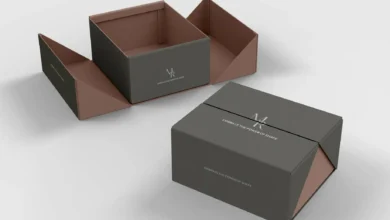Stainless steel checkered plate is well-known for its durability, strength, and slip-resistant properties, making it a go-to material for various industrial and commercial applications. However, its role in green architecture—a growing field focused on sustainability and environmental responsibility—cannot be overlooked. As the world moves towards more eco-friendly building practices, stainless steel checker plate is emerging as a material of choice for architects and builders alike.
Moreover, stainless steel sheet suppliers play a crucial role in ensuring the availability of high-quality materials that contribute to sustainable building practices while also enhancing the aesthetic appeal of modern architecture. This article explores how stainless steel checker plate contributes to sustainable building practices while also enhancing the aesthetic appeal of modern architecture.
The Role of Stainless Steel Checker Plate in Green Architecture
Green architecture, also known as sustainable architecture, prioritizes the use of environmentally responsible materials and building practices to reduce the carbon footprint of construction projects. Stainless steel checker plate fits perfectly into this paradigm due to several key factors:
- Recyclability and Sustainability
One of the most significant advantages of stainless steel checker plate is its recyclability. Stainless steel is 100% recyclable, meaning it can be melted down and reused without any loss of quality. This makes it an excellent choice for green buildings, where reducing waste and promoting the reuse of materials are critical objectives.
Recycling Rates: Stainless steel has one of the highest recycling rates of any material. According to industry data, over 80% of stainless steel is recycled at the end of its life cycle, significantly reducing the demand for new raw materials and the energy required for production.
- Durability and Longevity
Stainless steel checker plate is incredibly durable, withstanding extreme weather conditions, heavy loads, and high traffic without degrading. This durability means that structures built with stainless steel require less frequent repairs and replacements, leading to lower material consumption over time. In green architecture, longevity is a key factor in minimizing the environmental impact of buildings.
Life Cycle Analysis: Studies show that the long lifespan of stainless steel products contributes to their sustainability. Buildings that incorporate stainless steel components, like checker plates, often experience reduced maintenance costs and extended service lives, which align with the principles of sustainable construction.
- Energy Efficiency
The reflective properties of stainless steel checker plate can contribute to a building’s energy efficiency. Reflective materials help to reduce the heat absorbed by a building, thus lowering the need for air conditioning in hot climates. In green architecture, reducing energy consumption is crucial for minimizing a building’s environmental footprint.
Thermal Performance: The use of stainless steel checker plate on rooftops or façades can improve a building’s thermal performance by reflecting solar radiation, which can lead to significant energy savings, especially in large commercial buildings.
- Aesthetic Appeal and Versatility
In addition to its functional benefits, stainless steel checker plate is also appreciated for its sleek, modern appearance. Architects often choose this material not only for its sustainability but also for its ability to enhance the aesthetic appeal of a building. The distinctive pattern of the checker plate adds texture and visual interest, making it a popular choice for both interior and exterior applications.
Design Flexibility: Stainless steel checker plate can be used in a variety of ways, from flooring and wall cladding to decorative elements and structural components. Its versatility allows architects to incorporate it into a wide range of design styles, from industrial chic to contemporary minimalism.
Applications of Stainless Steel Checker Plate in Green Architecture
- Flooring and Walkways
One of the most common uses of stainless steel checker plate in green architecture is in flooring and walkways. Its slip-resistant properties make it ideal for areas that need to be safe for foot traffic, such as staircases, ramps, and pedestrian bridges. In green buildings, where safety and sustainability are top priorities, stainless steel checker plate is a preferred choice.
Example: A LEED-certified office building in New York uses stainless steel checker plate for all its external walkways and emergency exits. The material’s durability and recyclability were key factors in achieving the building’s sustainability goals.
- Exterior Cladding
Stainless steel checker plate is also used as exterior cladding in green architecture. Its reflective surface helps to reduce heat absorption, while its durability ensures that the building’s façade will last for decades without needing replacement.
Example: A modern eco-friendly hotel in California features stainless steel checker plate cladding on its south-facing walls. The reflective properties of the material help keep the building cool in the summer, reducing the need for air conditioning.
- Interior Design Elements
In green architecture, every material is chosen with both form and function in mind. Stainless steel checker plate is often used for interior design elements, such as wall panels, countertops, and even furniture. Its industrial look complements sustainable design concepts, while its durability ensures that these elements will stand the test of time.
Example: A sustainable restaurant in London incorporates stainless steel checker plate into its interior design, using it for bar tops, wall panels, and even tabletops. The material’s rugged look aligns with the restaurant’s eco-conscious brand.
- Structural Components
Beyond aesthetics, stainless steel checker plate is also used for structural components in green buildings. Its strength and load-bearing capabilities make it suitable for applications such as mezzanine floors, staircases, and support beams.
Example: A green manufacturing plant in Germany uses stainless steel checker plate for its mezzanine floors and support structures. The plant’s design emphasizes minimal environmental impact, and the use of recyclable, durable materials like stainless steel was a key part of achieving this goal.
Conclusion
As green architecture continues to gain momentum, the demand for materials that are both sustainable and stylish is on the rise. **Stainless steel checker plate** meets these criteria, offering architects and builders a versatile material that excels in both form and function. Its recyclability, durability, energy efficiency, and aesthetic appeal make it an ideal choice for sustainable building projects.
Incorporating stainless steel checker plate into green architecture not only helps to reduce a building’s environmental footprint but also adds a modern, industrial edge to the design. Whether used for flooring, cladding, or interior design, stainless steel checker plate is a material that truly bridges the gap between sustainability and style.




